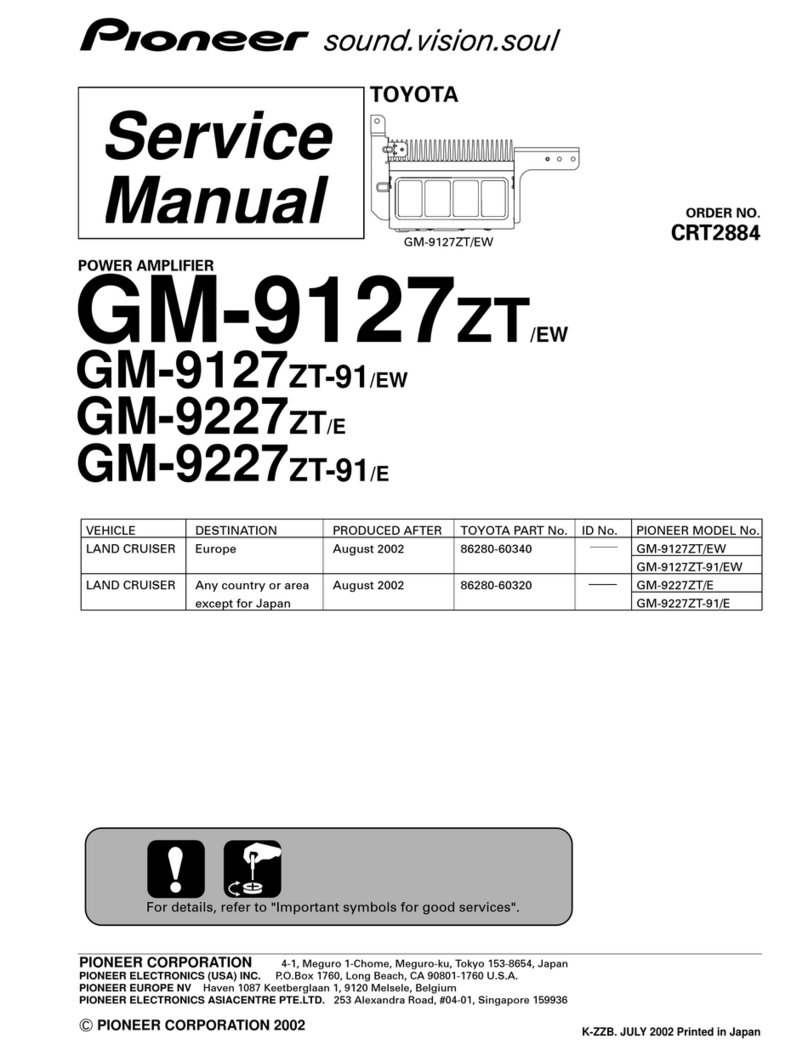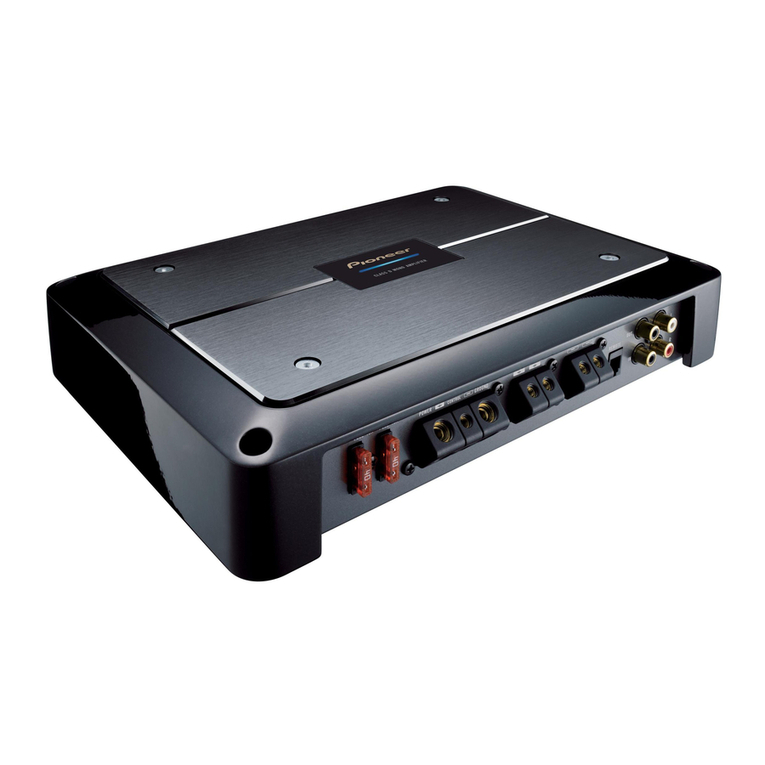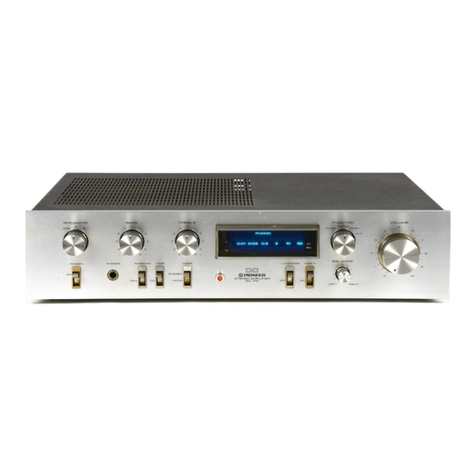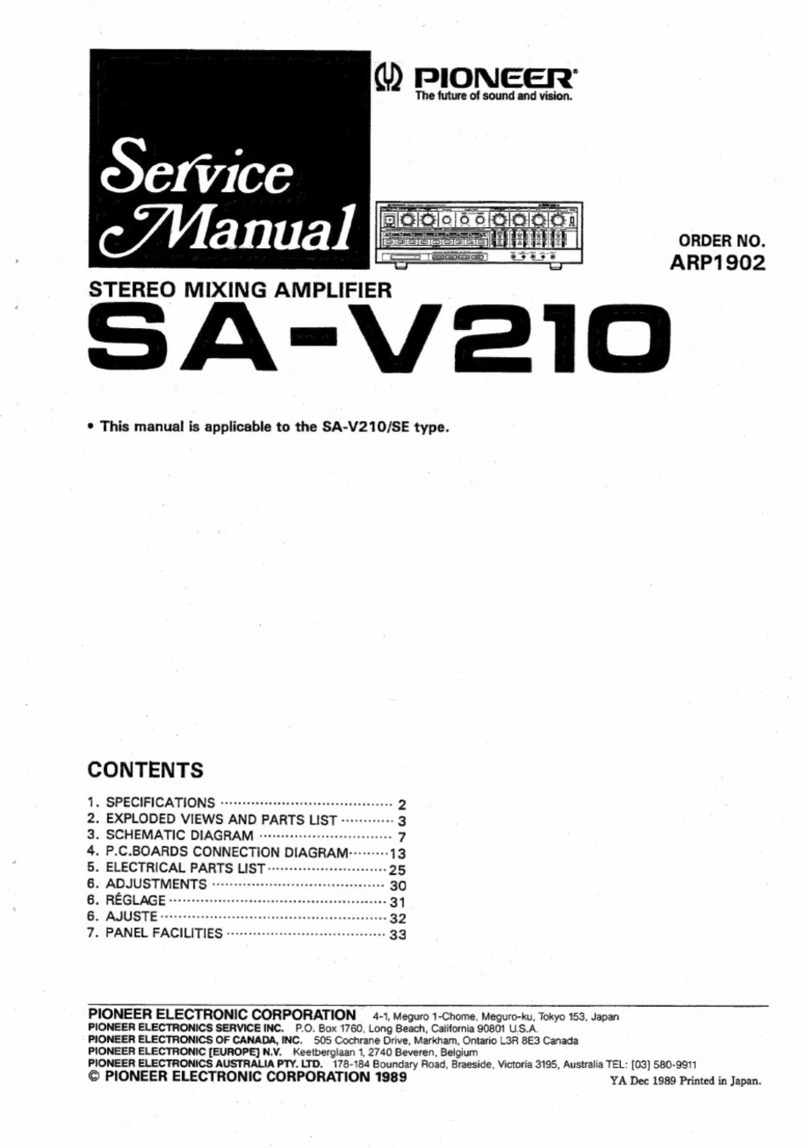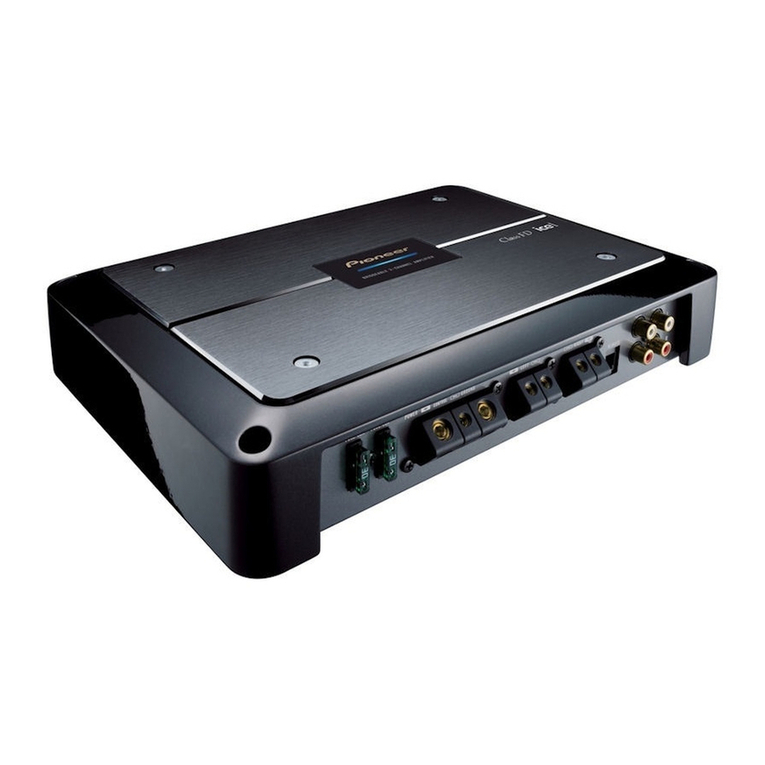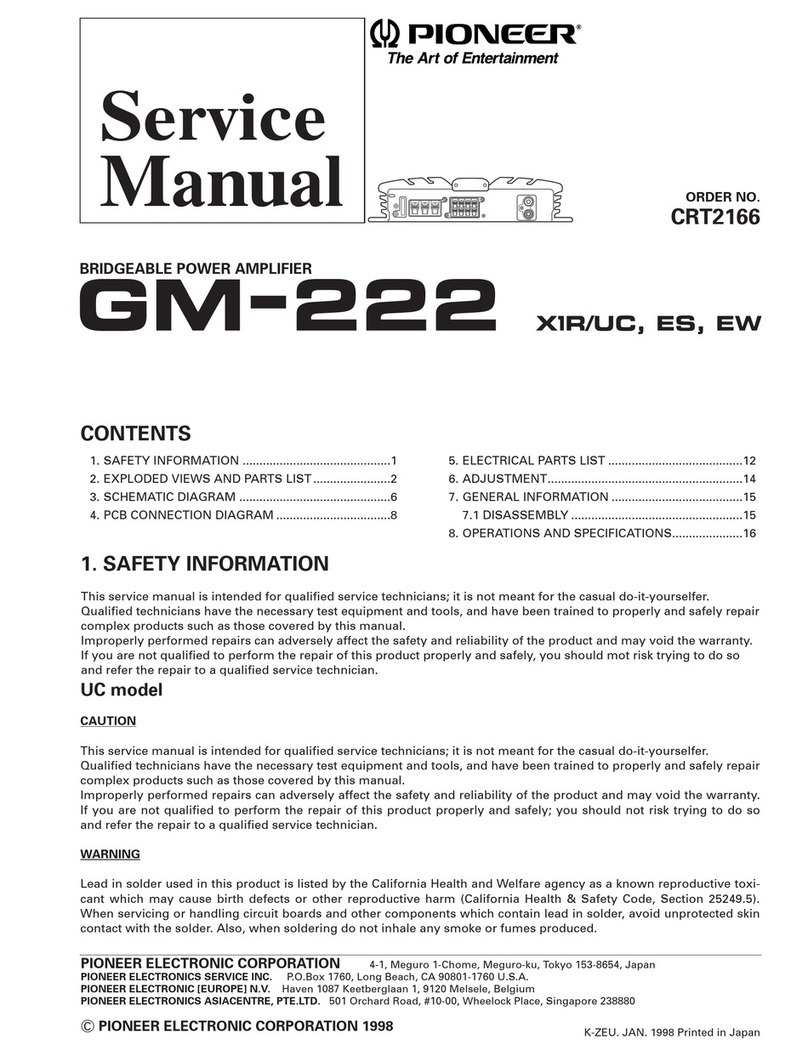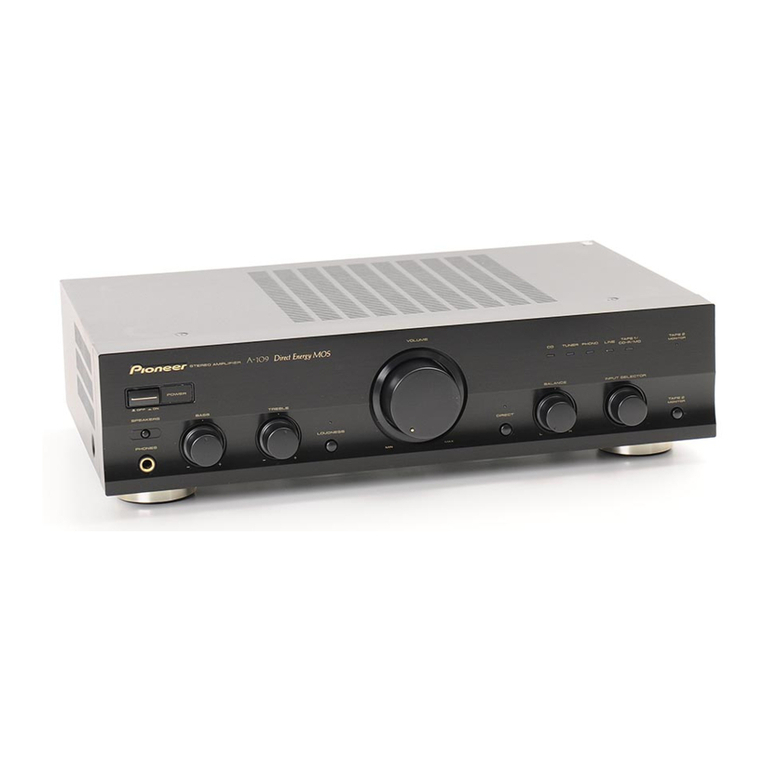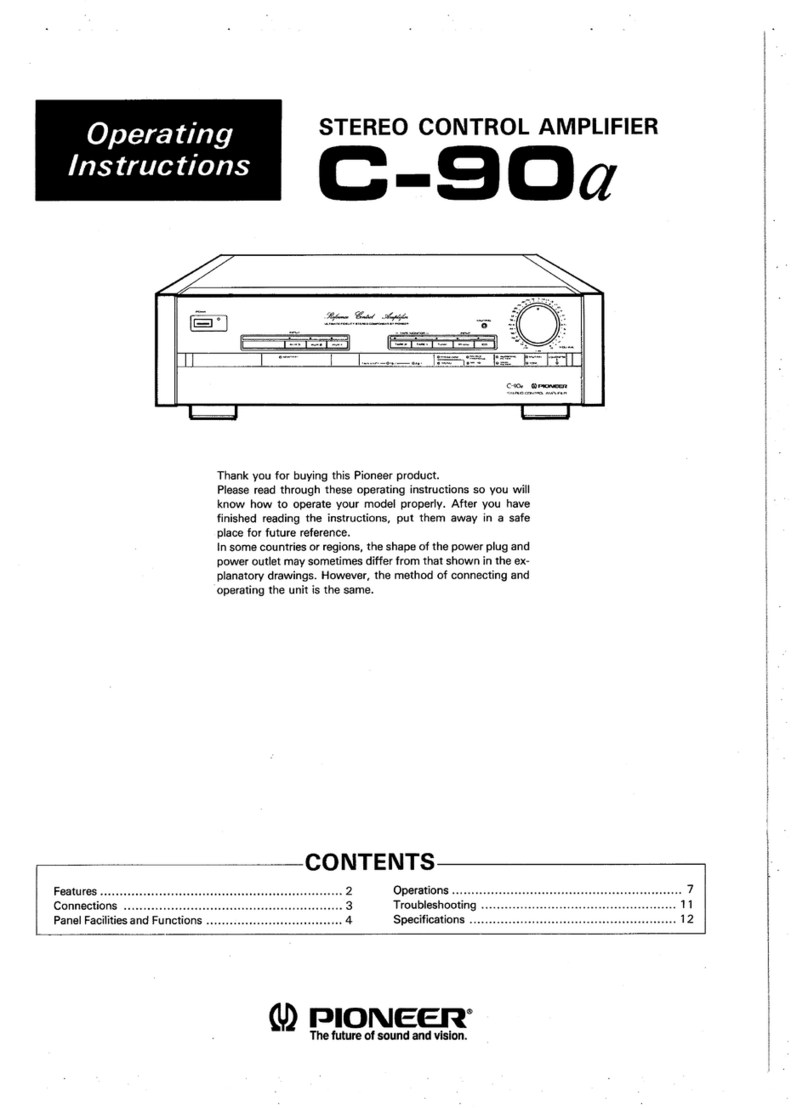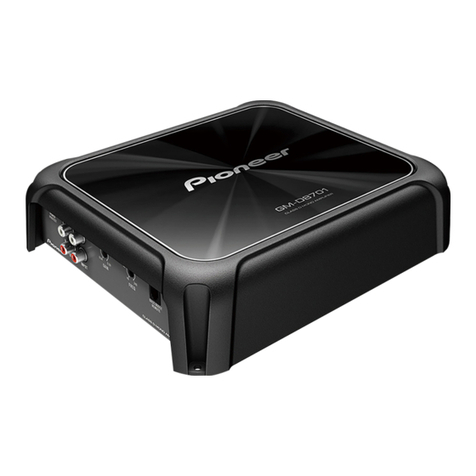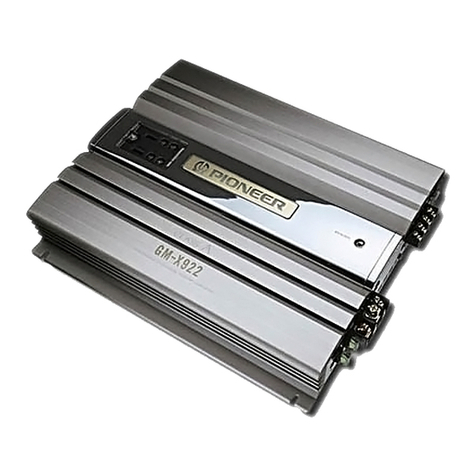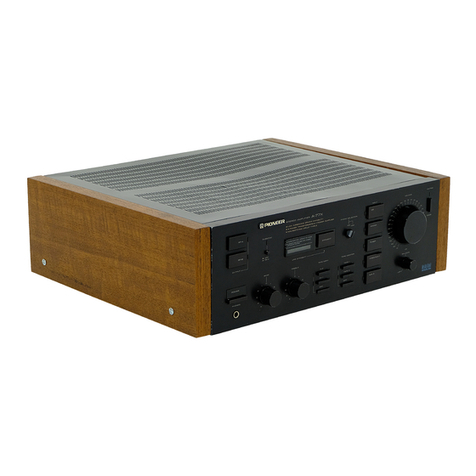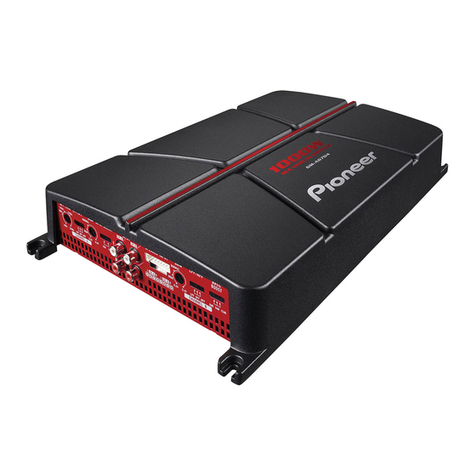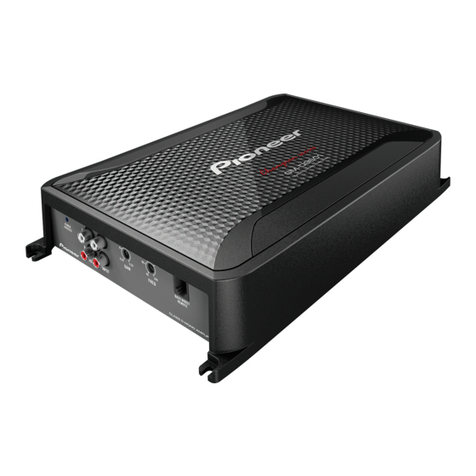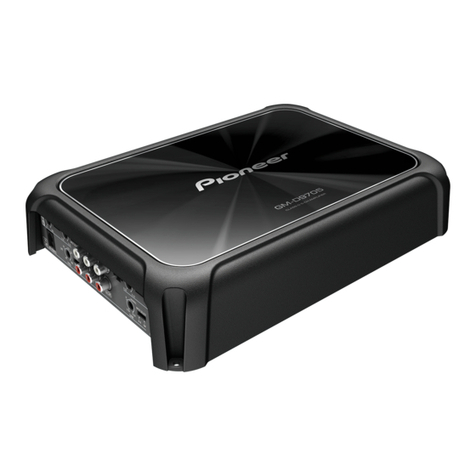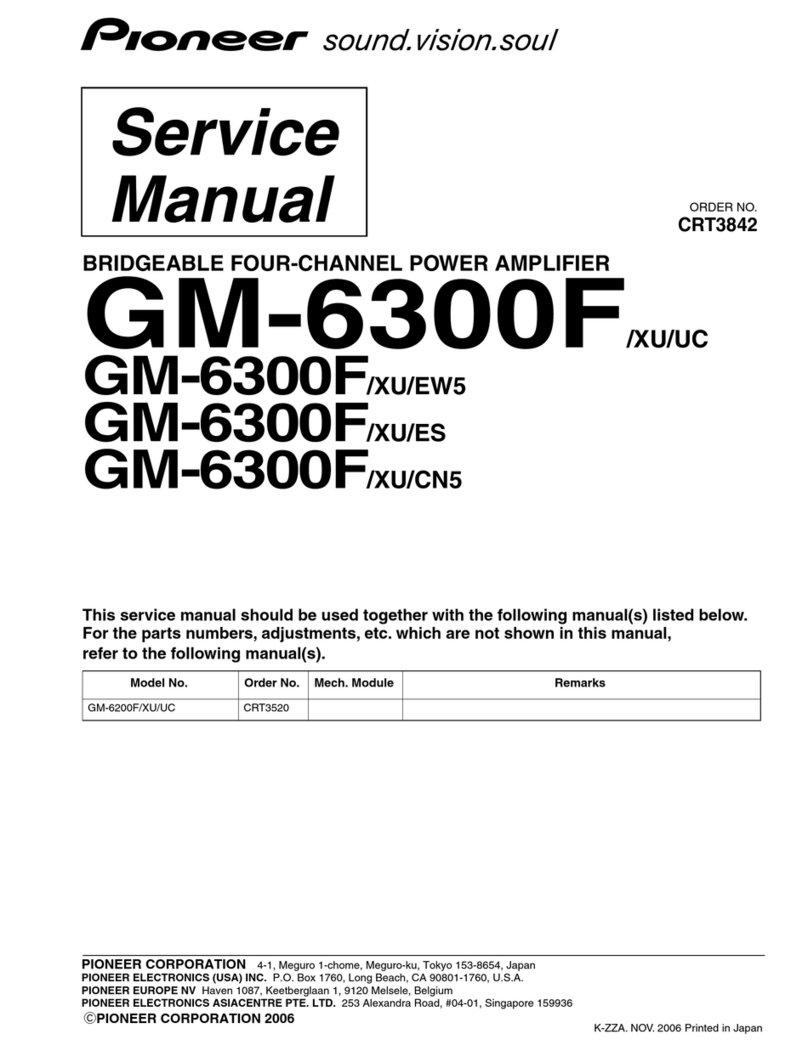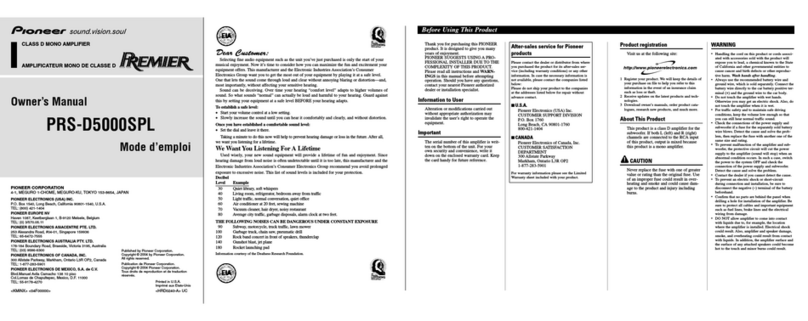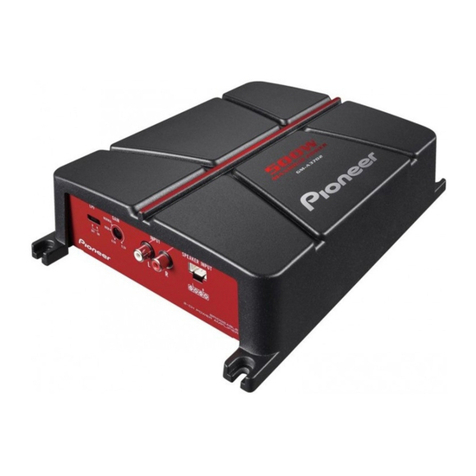DC Balance
Detector
Q25 and Q26 make up a differential amplifier,
as shown in Fig. 10. The inputs (bases) of these
transistors are connected to the left and right
power amplifier. If for some reason the DC
balance of the power stage is upset, a potential
difference arisesin the differential amplifier input
signal,unbalancing q25 and Q26 collector currents.
When one of the collector potentials becomes
lower than Q27 basepotential, this basepotential
is dissipated through D1 or D2, q27 switches ON,
and relay and lamp drives operate.
r- -----
i itcll
r--------J I
I
I
L- --:E---..i
Fig.
10 DCBalanceDetectorCircuit
4.4 SURGE
CURRENTSUPPRESSOR
CIRCUITS
A toroidal core power transformer is used in the
SPEG2, which while possessing
compactnessand
a large handling capacity, also exhibits extremely
low intemal resistance. In combination with the
four 15,000pF electrolytic capacitorsforming the
power supply, surge current accompanying power
switch operation can reach a maximum of 3004.
The power supply can therefore be damagedunless
protective measures
aretaken.
The main sources of surge current generation are
power transformer excitation current and power
supply electrolytic capacitor charging current.
Two surgesuppressor circuits are employed in the
SPEC-2, one each in the primary and secondary
power transformer circuits. These circuits are
shownin Fig. 11.
Power transformer excitation current is handled
by the relay surge suppressor circuit at the
primary side. When the power switch is turned
ON, the current passes through R2 & D1 and
chargesC1, therefore it does not flow through the
relay drive coil immediately, and RLl remains
OFF. The transformer excitation current flows
through R1 during this interval. After. C1 is
completely charged, current flows in the RL1
+83 drive coil switching it ON, and R1 is shorted.
The surge suppressor circuit in the
secondary side of the power trans-
former is designed to handle the
electrolytic capacitor charging cur-
rent. When the power switch is
turned ON, RL2 and RLB remain
OFF due to protection circuit op-
eration. Consequently, the current
passesthrough R3 and R4, gradu-
ally charging the electrolytic capaci-
tors through a bridge type rectifier
circuit. RL2 or RLB is switched ON
when charging has beencompleted,
gving the normal operating mode.
By employing these circuits, surge
current is limited to approximately
40 A.
tlectrolytic
capacitor
Poror
amplilicr
+Bl
+
tlectrolytic
catac
ito
t
Relay
and
lanp
drivors
10
Fig.
11 SurgeCurrent
SuppressorCircuit
-Bl
